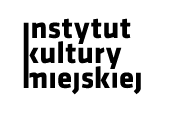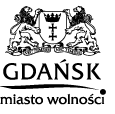cura
torial
con
cept
The silent suns were like a giant zenith of a song
On 23 July 1898, an “arbour surrounded by beech trees” in the Oliwa Park witnessed an unusual event. The young Rainer Maria Rilke, together with his friend and fellow writer Lou Andreas-Salomé, are inventing the ending to one of Rilke’s poems:
Just look at how life keeps lingering on
before taking a turn. The silent suns
were like a giant zenith of a song.
Then the hillsides woke up: do you hear, though?–
this fear is what you’re left with all at once.
A plaque commemorating the moments described in Rilke’s journal was unveiled in the park in 2016. We may only imagine the weather of this sunny summer’s day reflected in the lines of the poem.
The singular character of Oliwa is intrinsically connected with its rich past and unique location on a forested hill that frames the landscape. The district has retained clear traces of the old urban layout, architecture and a specific atmosphere; even today it seems like a separate town. In urban planning, social and economic terms, it is an island that displays all characteristics of a developed polis. Oliwa has a university, schools, museums, a zoo, business and commercial centres, a cathedral with the famous organ and a wonderful park. While preserving its historical character, the district experiences constant economic, social and cultural growth.
What image do we see when we analyse the elements that constitute the unique nature of this district? What can be regarded as the dominant feature of this remote part of the city, which creates its own micronarratives? Are we going to submit to Rilke’s lyrical vision or rather direct our attention towards the changing social tissue, encompassing the inhabitants (whose parents or grandparents often settled here shortly after World War II), school and university students, employees of local companies and tourists wanting to see the famous organ and park? At present, Oliwa is a heterogeneous space that combines echoes of its rich history, beauty of the local landscape, the everyday humdrum and a multifaceted narrative about our aspirations to, and dreams of, a better life.
The tenth, jubilee edition of the NARRACJE festival attempts to arrive at an all-encompassing interpretation of Oliwa. The invited artists will be expected to reveal to the viewers the broader context that gives new meanings to what may otherwise seem obvious. Perhaps thanks to artistic interventions we might be able to rediscover this part of the city and see it as if it was reflected in a mirror? Rilke and Lou Andreas-Salomé wrote about suns here – we are going to look at Oliwa after dusk, on a November evening, when everything is going to look differently.
Piotr Stasiowski


